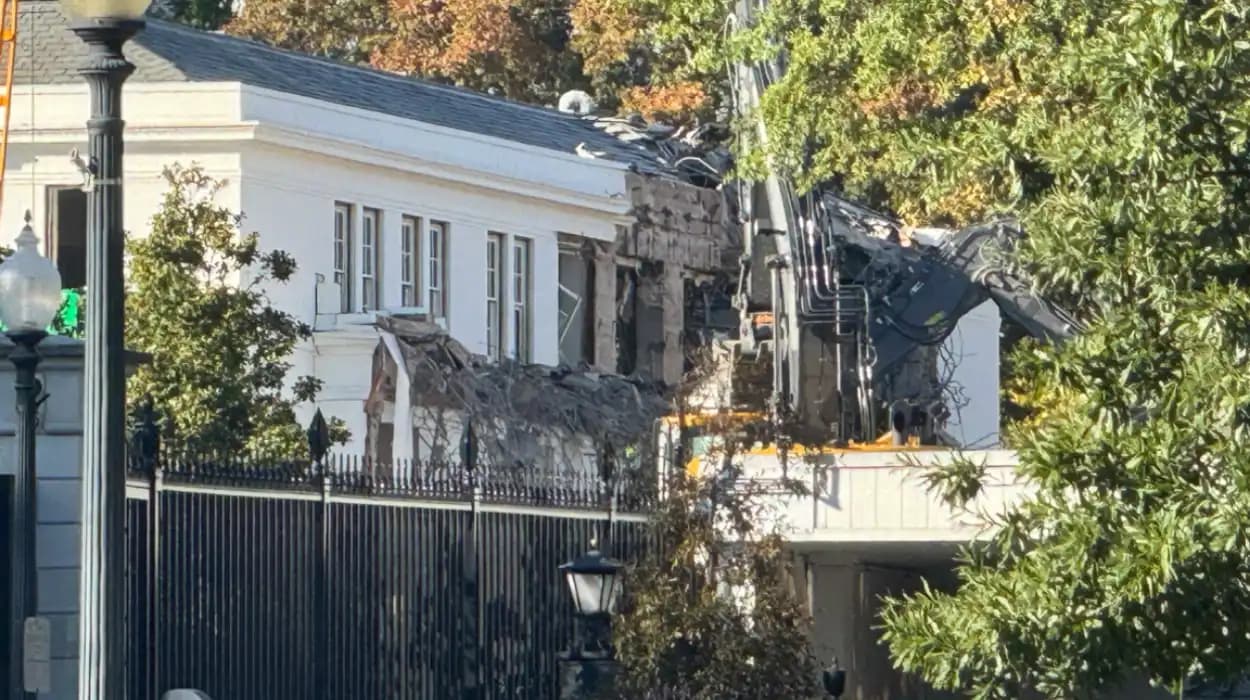President Donald Trump announced plans to tear down the "existing
structure" of the White House East Wing as part of a new redevelopment
initiative. The announcement confirmed that the current East Wing building will
be replaced with a new structure, aiming to update this historic part of the
White House complex.
Announcement of East Wing Demolition
As reported by Laura Mendez of BBC News, President DonaldTrump stated that the White House East Wing, an iconic part of the presidential
residence, will be demolished to make way for a new building. This decision
reflects Trump's broader vision to modernise the White House facilities while
preserving the legacy and functionality of the presidential estate.
Historical Significance of the East Wing
The East Wing of the White House has historically served
multiple roles, including offices for the First Lady and staff, as well as
hosting visitors for tours and official events. BBC News further explained that
the East Wing was first constructed during World War II and has undergone
various renovations over decades, making this demolition a significant change
to one of the most symbolic government buildings.
Details About the Planned Construction
According to James Carter from The Guardian, government
officials clarified that the new building will adhere to the architectural
style befitting the White House grounds, ensuring a seamless blend between the
old and the new. The demolition and construction process is projected to begin
in early 2026, with completion expected within a few years.
Presidential Statements on the Project
Speaking on the White House lawn, President Trump emphasised the importance of updating the East Wing for security and logistical reasons. As CBS News reported through journalist Amelia Green, Trump mentioned,
“The current structure served its purpose well for decades, but it is time for a fresh start. We want a building that meets 21st-century standards and serves the office with efficiency and dignity.”
Responses from Political and Public Figures
Michael Dunlop writing for Reuters noted that the
announcement received mixed reactions. Some heritage conservationists expressed
concerns about losing part of the historical fabric of the White House complex.
However, supporters argue that the plans reflect necessary progress and ensure
the White House remains functional for future administrations.
Architectural and Security Enhancements Planned
The White House Communications Office, as cited by Natasha
Li from The Washington Post, detailed that the new East Wing will incorporate
advanced security features, modern office spaces, and improved facilities for
the First Lady’s staff and external visitors. These upgrades are part of
broader efforts to enhance White House operations amid evolving security needs.
Timeline and Funding
According to financial disclosures reported by Alex Thompson
of Bloomberg, the project funding will come from federal allocations included
in the 2026 budget, with an estimated cost of approximately $250 million. The
construction is slated to commence in the first quarter of 2026, with a phased
approach to maintain operations within other parts of the White House.
Historical Context and Previous Renovations
Historian Elizabeth Turner writing for NPR reminded that the White House has frequently undergone renovations and expansions, including major rebuilds under Presidents Truman and Kennedy. The East Wing itself was initially a temporary structure during wartime but became permanent due to necessity.
The demolition and replacement of the East Wing mark one of the more prominent changes to the White House in recent years, reflecting a blend of maintaining tradition and adapting to current requirements. President Trump’s announcement signals commitment to preserving the operational effectiveness of the presidential headquarters while respecting its storied past.
